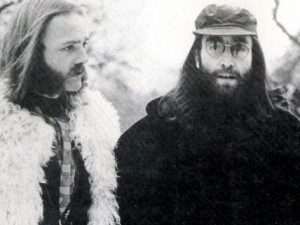
I’m often asked what it’s like being a freelancer – someone who creates often without knowing whether the work will ever be published. Suffice to say, it’s a speculative jungle out there. I know. As a newspaper and magazine writer for some 40 years, I’ve been eaten alive whole more than a few times. A bit of background:
In the late 1960s, I enrolled at Ryerson (before it was a university) in the Radio and Television Arts program. While working towards my diploma (1968-1971) I craved a taste of the real writing world, so I began submitting ideas for features to magazines and newspapers.
Naively, I considered myself an experienced showbiz writer. I had regularly submitted entertainment features to some of Toronto’s community newspapers on such jazz musicians a Phil Nimmons and Oscar Peterson.
In those years, however, the new frontier for content was clearly rock ‘n’ roll. Somehow I managed to get a foot in the door writing freelance reviews for the Globe and Mail, covering such rockers as Frank Zappa, Kris Kristofferson and the Beach Boys. I began rubbing shoulders with other rock journalists, Peter Goddard, Wilder Penfield III and a British critic named Ritchie Yorke, who claimed to “know” several of the Beatles.
Yorke also claimed to be a magazine entrepreneur. No doubt he used the same claim to fame to attract investors for a new rock-zine venture. He also managed to convince a number of novice writers to invest their talents. Submit material on spec for the first issue or two, he said, and we’ll pay you by edition number two or three. What a chance, I thought, getting my rock features published in a magazine. Money? Who cared, as long as I was in print, I thought.
Pop Magazine, Ritchie Yorke’s first Canadian rock music magazine, went to press in July 1971. I had a piece in the first edition, a feature about Louisiana-born rockabilly singer, Tony Joe White. (In case you’ve forgotten, his one hit was “Polk Salad Annie.”) By the end of that summer, however, just like Tony’s song, Pop Magazine was only a memory. Yorke had pulled the plug on the mag. To my knowledge, none of its regular contributors, myself included, saw a single pay cheque.
No matter. By that fall, publisher Yorke resurfaced with a new publication. Grapevine was glossier, fatter, more colourful and it featured some of the same writers seen in Pop. Yorke’s promise was the same – stick with us and you’ll see cash by issue three or four. By the time Grapevine hit the stands, publisher Yorke had made me one of the mainstays of his freelance writing pool.
I was prolific. The September edition included my features on Canadian band The Guess Who, American bluegrass picker John Hartford and feminist rockers Fanny. The second and third Grapevine editions had my features on Chuck Mangione, David Wiffen, B.B. King, Linda Ronstadt, Murray McLauchlan and Rick Nelson to name a few. By January of the new year, my thousands of speculative words had yielded plenty of promises, but no money.
Twice burned, a third time shy? Apparently, I hadn’t learned my lesson. About the same time, another Canadian rock magazine hit the racks. Its marketing approach was equally unique (and equally productive for its writers). A rock promoter, named Joey Cee, contacted a number of us to write feature pieces about the participants in an upcoming rock concert at Maple Leaf Gardens.
The concept was simple. Write and publish the magazine in advance of the concert. Then hand it out for free to concert-goers inside Maple Leaf Gardens. This rag was called Wingit (no better name could have been chosen). As usual, I pounded out a ton of material on Steppenwolf, the James Gang and Taj Mahal for example. Again the promise: Fees would be paid to the writers by Wingit issue number two.
Like any self-respecting (if hopelessly naive) journalism newcomer, on the day of the concert, I rang up the publisher to get tear sheets of my articles.
“Don’t have any,” Cee said. “All copies went to the Gardens.”
So I raced uptown to the concert venue just in time to see the fans flooding out of the concert. Everybody seemed to have had a good time. None of them, however, clutched to his/her breast the prize of the day, a free copy of the rock masterpiece Wingit. I schmoozed my way into the Gardens in time to see the caretakers sweeping up concert debris. There among the cups, chip bags and popcorn were the last few copies of my precious prose. I grabbed one. It had a huge footprint on it. It seemed fitting.
It was the only return I ever saw from the venture – a Wingit with a boot mark on it. Wingit went belly up before issue two. I never saw a penny for any of my labours. I soon got out of the pop music coverage business. Clearly, at the time, there was no money in it. Nobody dealt with rock writers fairly. And the life span of rock periodicals seemed as ephemeral as the music. I took one more stab at the genre, however, in 1972. I queried two big American pop magazines. That’s when I finally saw both publication and cash. I was published in Country Sky (a country music) magazine and Rolling Stone.
Need I say more?